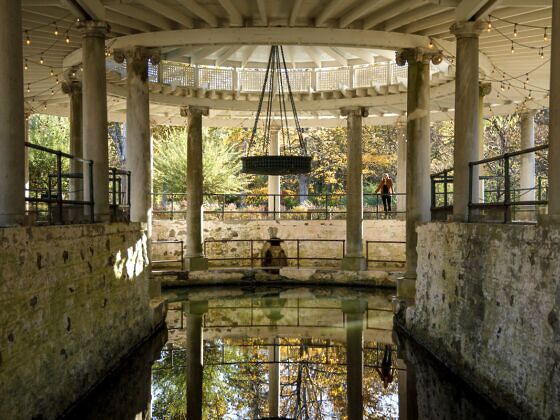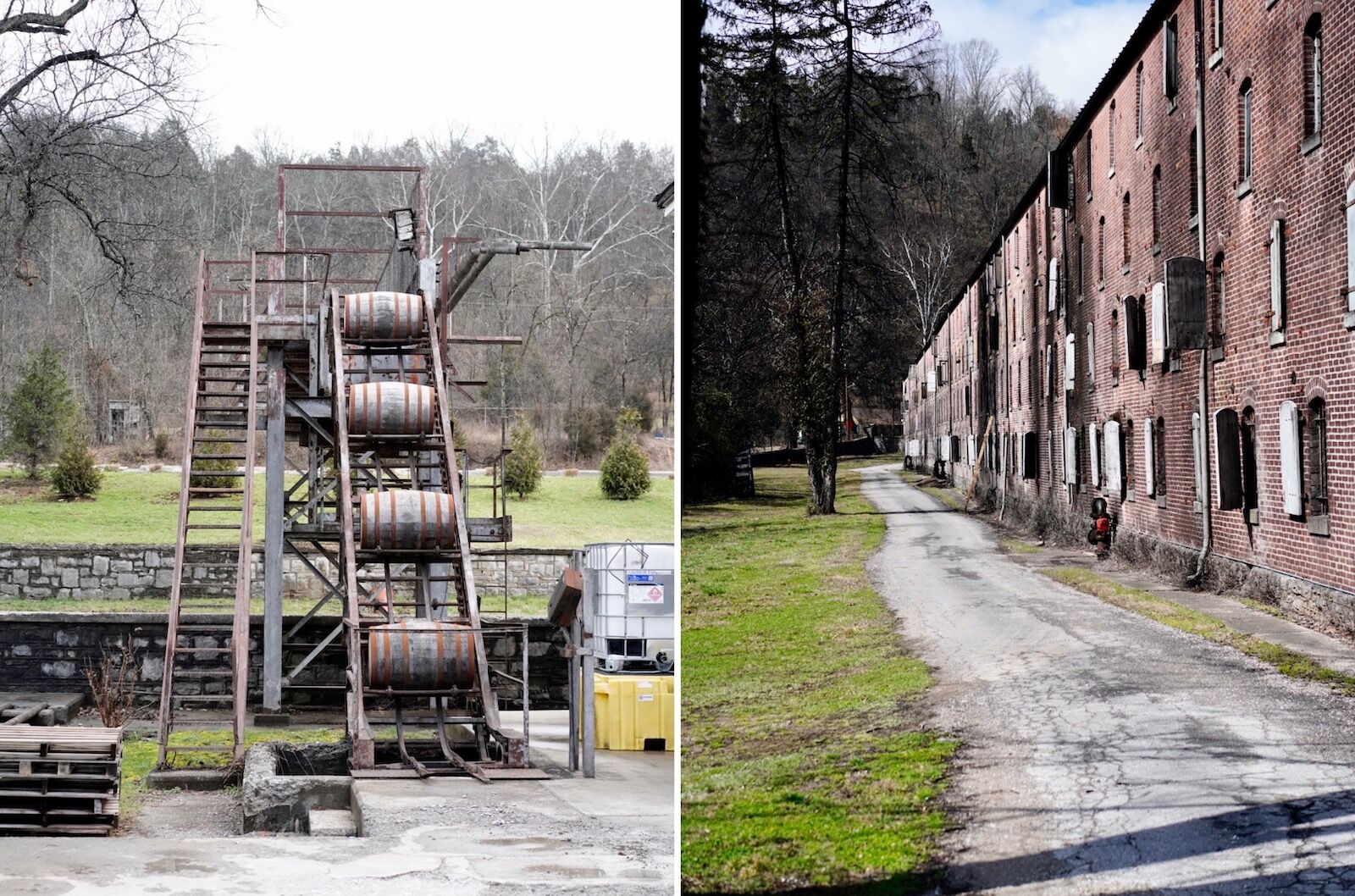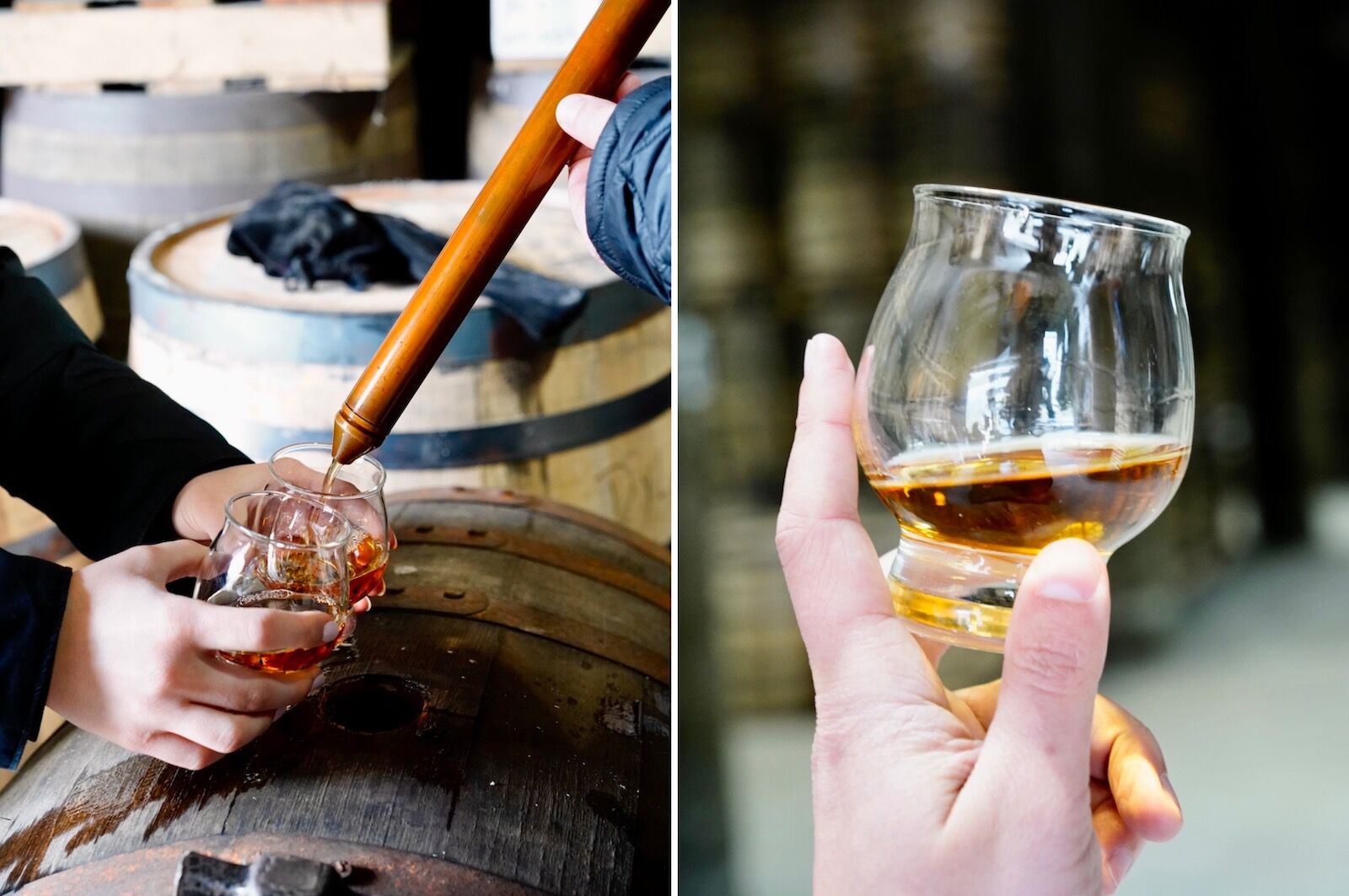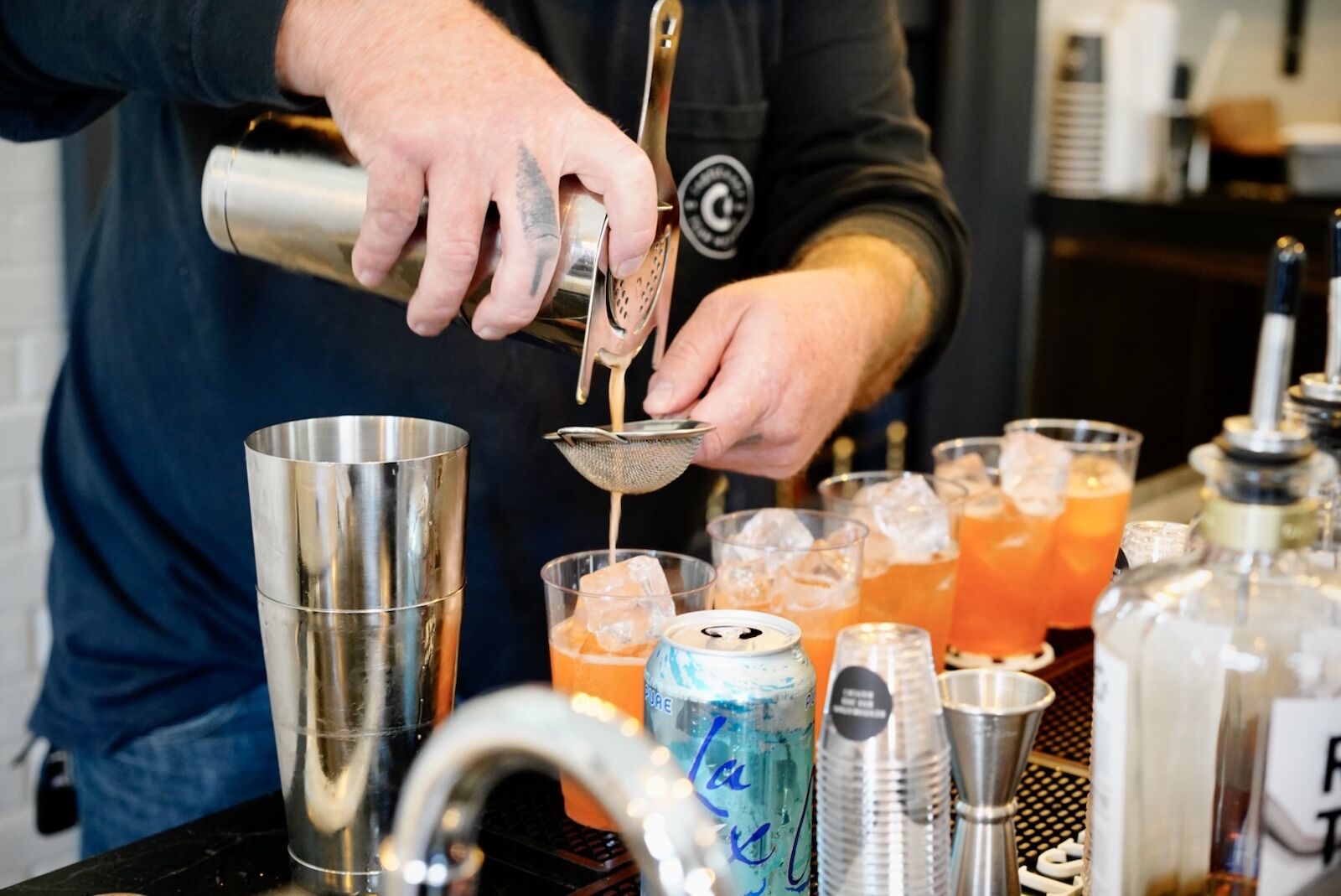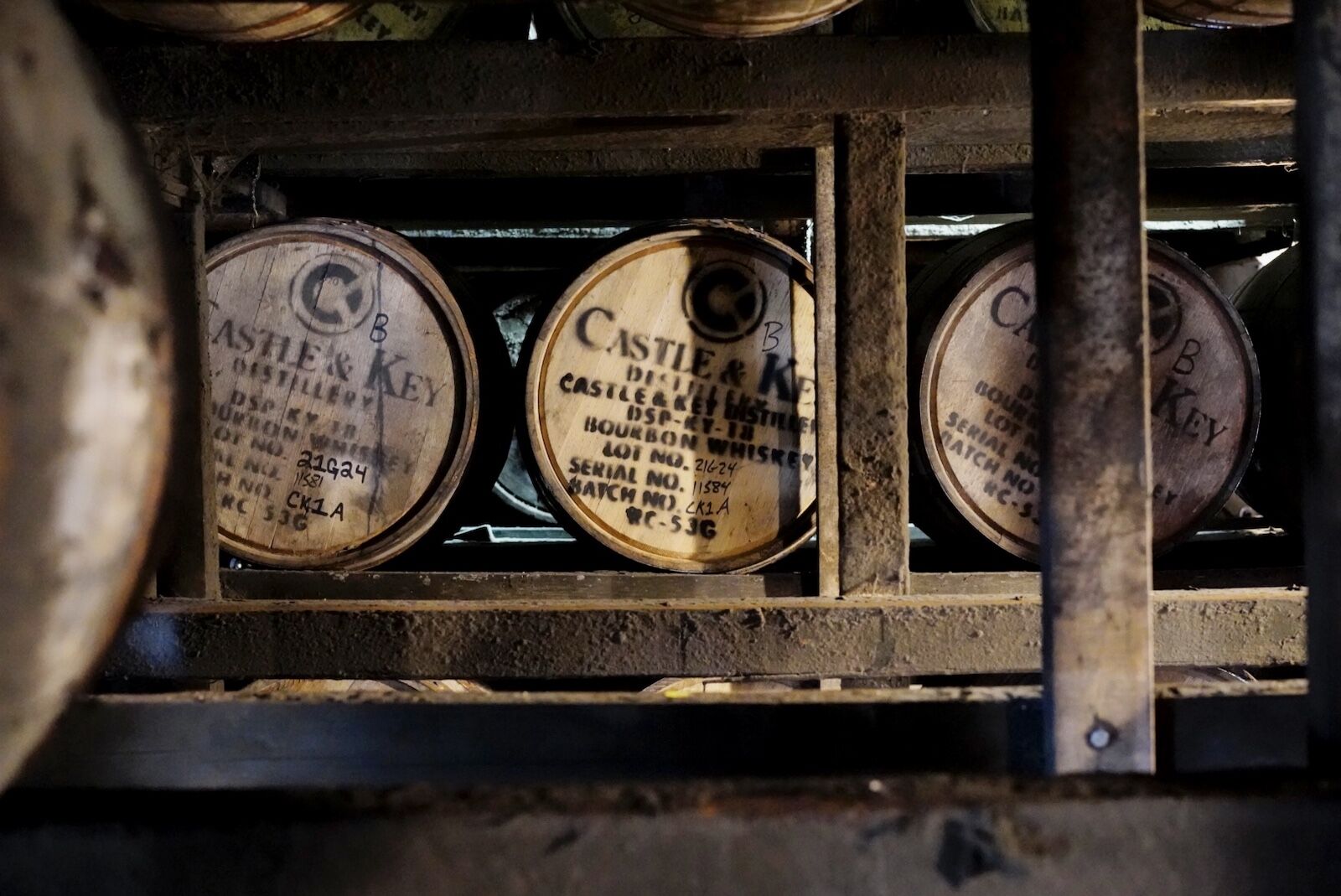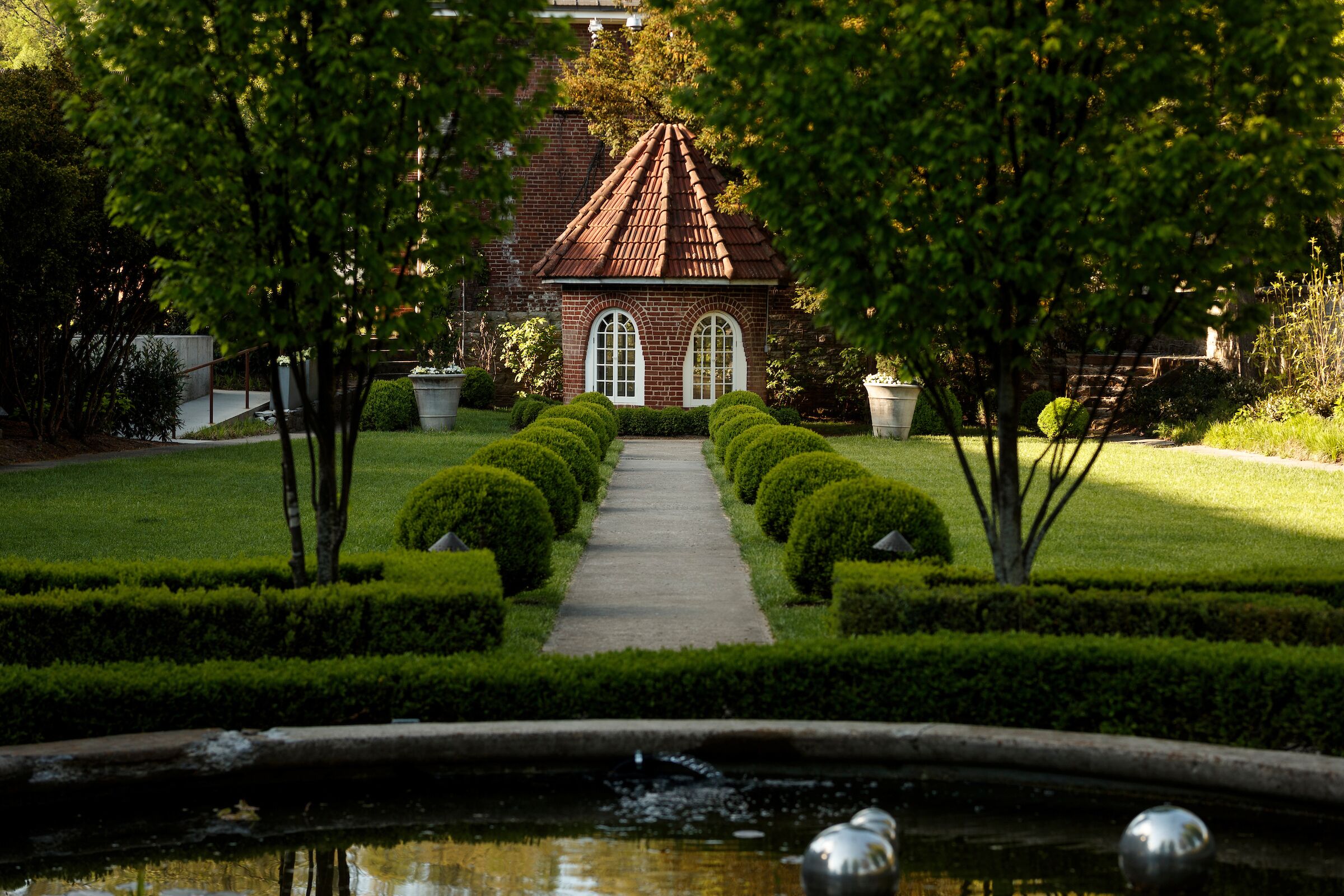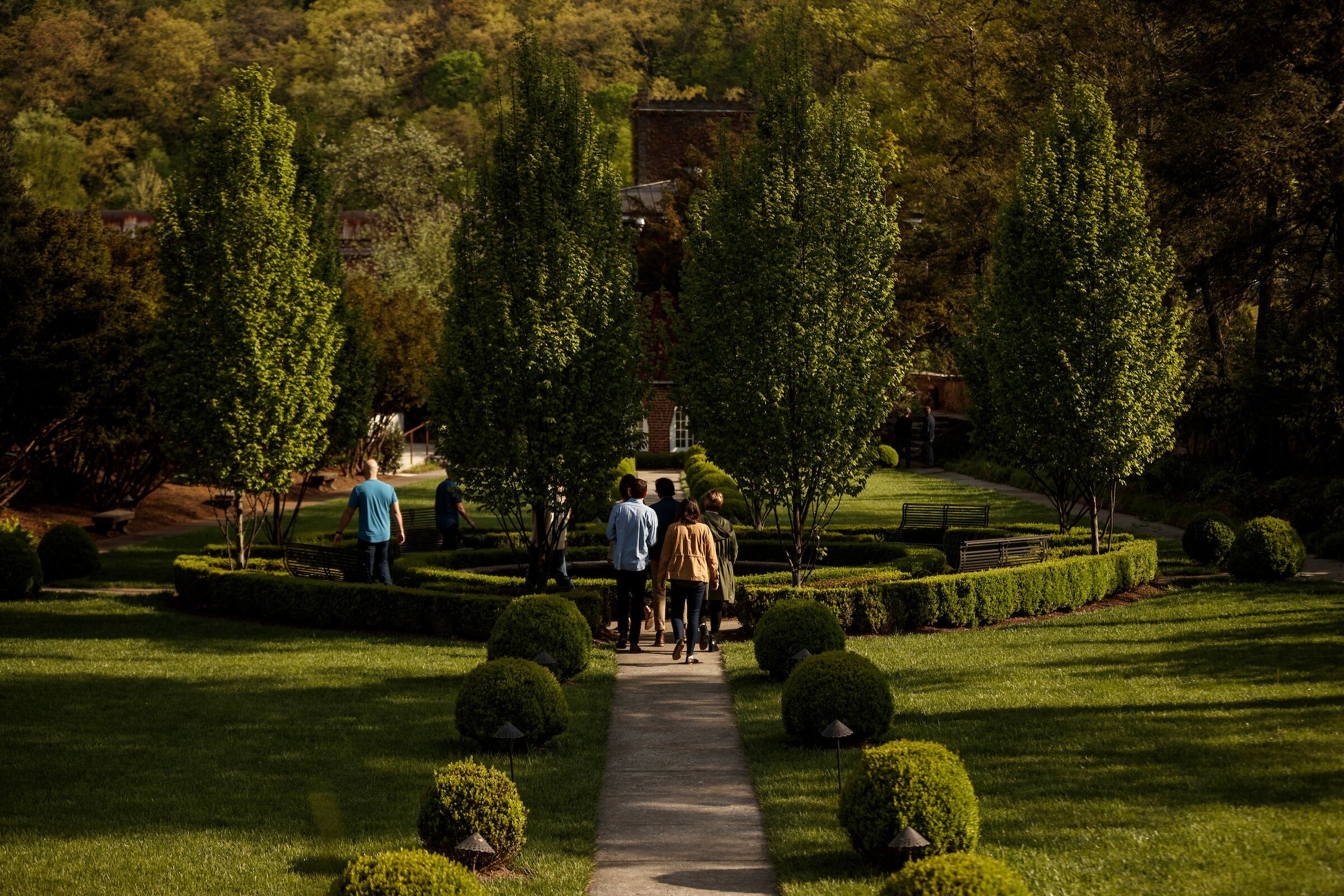There are plenty of iconic places to drink bourbon in Kentucky. But there’s one experience that might just top them all: drinking whiskey on the castle grounds designed by the man known as the Father of the Modern Bourbon Industry.
Castle & Key Distillery is a working distillery that produces gin, vodka, rye whiskey, and, most importantly, bourbon. It also doubles as one of the best places to drink any of the above spirits in the state, thanks to the limestone castle and surrounding bar, sunken garden, and botanical trail.
